How to Implement Augmented Reality in Healthcare to Make Hospitals More Effective
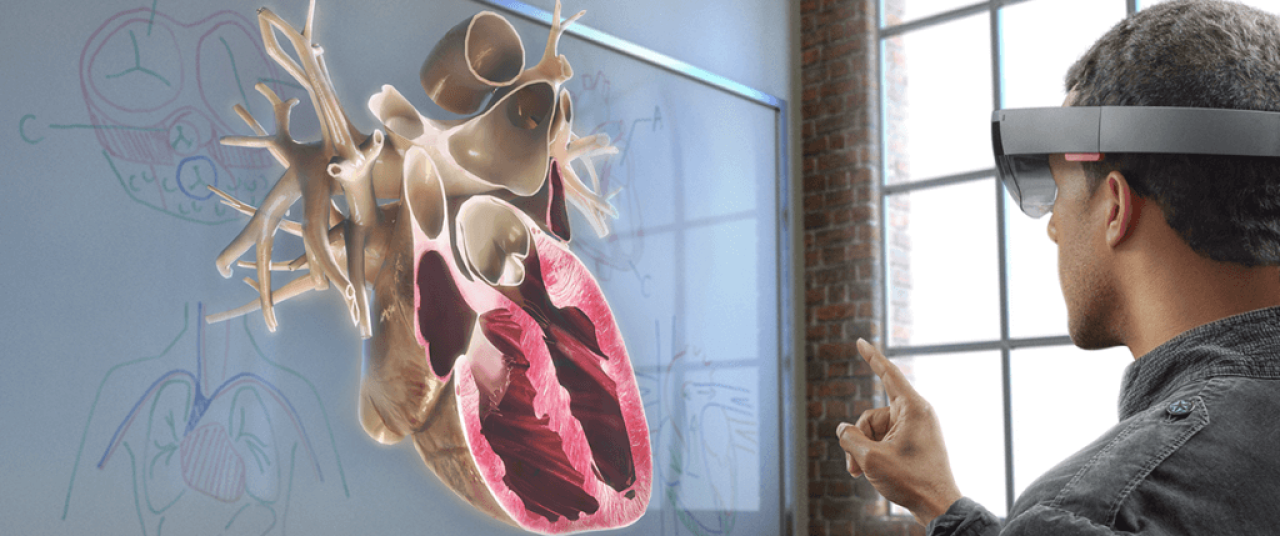
The scope of augmented reality in healthcare is expanding, and more and more medical organizations are ready to invest in it.
According to Reports and Data, AR/VR technology in the healthcare market will reach a value of $7.05 Billion by 2026.
Companies in the healthcare sphere are ready to invest in AR because of the burgeoning variety of benefits the technology offers.
In this article, we’ll discuss how AR technology benefits healthcare organizations and how it can be implemented in the daily work of a medical team.
How Augmented Reality in Healthcare Benefits Medical Organizations
Here are some of the main benefits companies in the healthcare field may experience by implementing Augmented Reality.
—AR helps improve patient experience
As in other areas of business, AR technology can improve the consumer/patient experience.
For example, Cleveland Clinic uses AR technology to put children in a more pleasant virtual environment during medical procedures, easing the stress on young patients. It’s one way of improving the quality of services and increasing patient satisfaction.
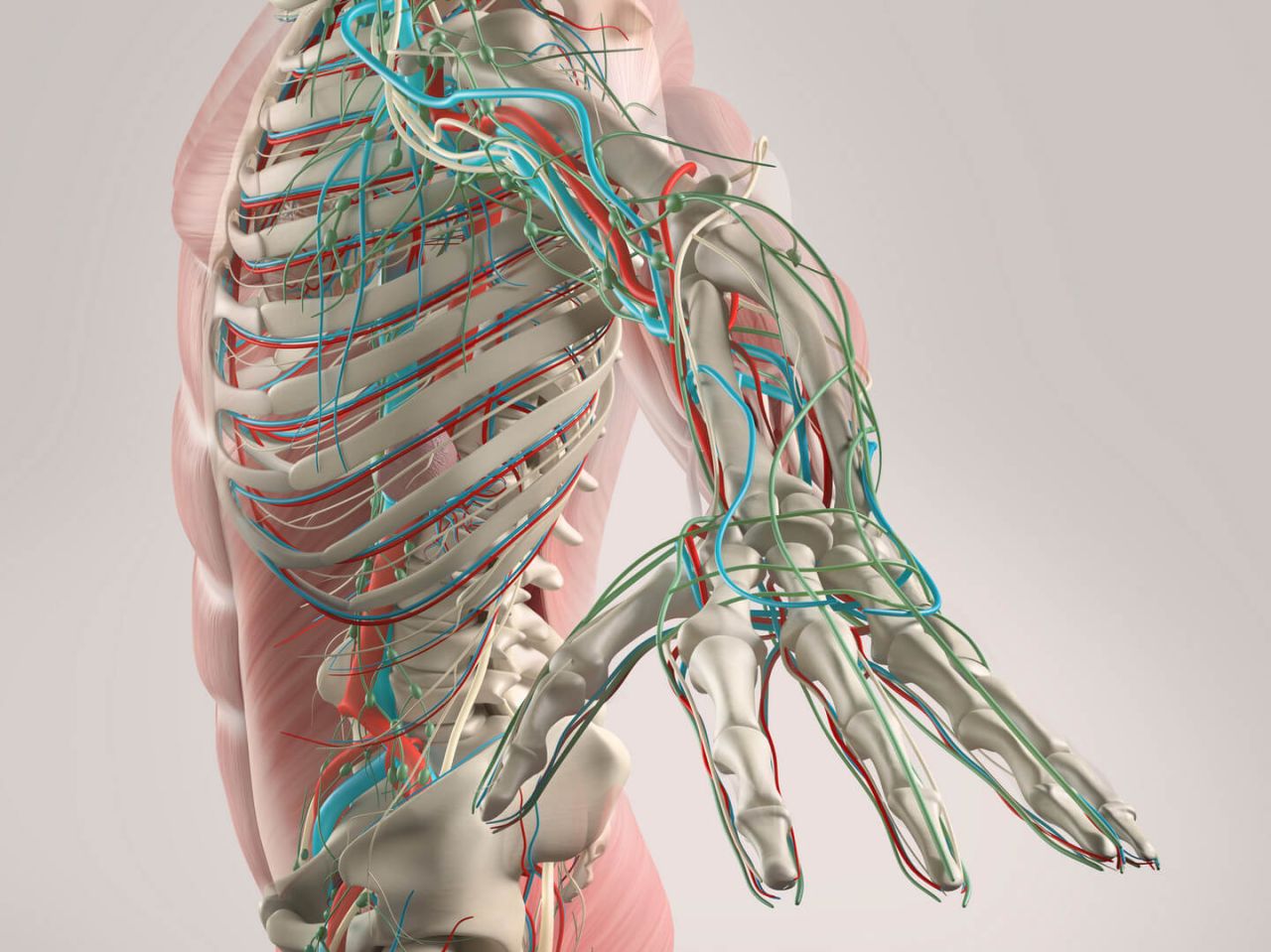
Using AR devices, doctors at Cleveland Clinic can now show patients their condition and the processes taking place inside their bodies.
Patients who download an AR app can use it to stay in touch with their doctors and receive treatment at home after they leave the hospital.
One way or another, these uses of AR increase customer satisfaction and provide a better patient experience during treatment.
-Augmented reality in healthcare helps improve staff productivity
As with the patient experience, AR technology helps make the work of medical staff more effective in a variety of ways.
Implementing technology helps hospitals simplify and speed up the work of surgeons (more detail in a moment).
AR-based tools can help doctors stay in touch with patients even at a distance, so time need not be wasted on attending personal appointments.
The doctor can adjust treatment in a few minutes, allowing him or her more time to spend on critical work activities.
-AR helps to assess and decrease risks
Healthcare is an area closely connected with risk.
Doctors’ errors lead to negative consequences: complaints, lawsuits and threats to a hospital’s reputation.
AR-based tools can help therapists make the right diagnosis, reducing the likelihood of a mistake.
Augmented reality in healthcare may also reduce the risks associated with minimally invasive surgery. Today, AR smart glasses can replace an endoscopic camera that monitors and displays important statistics and images.
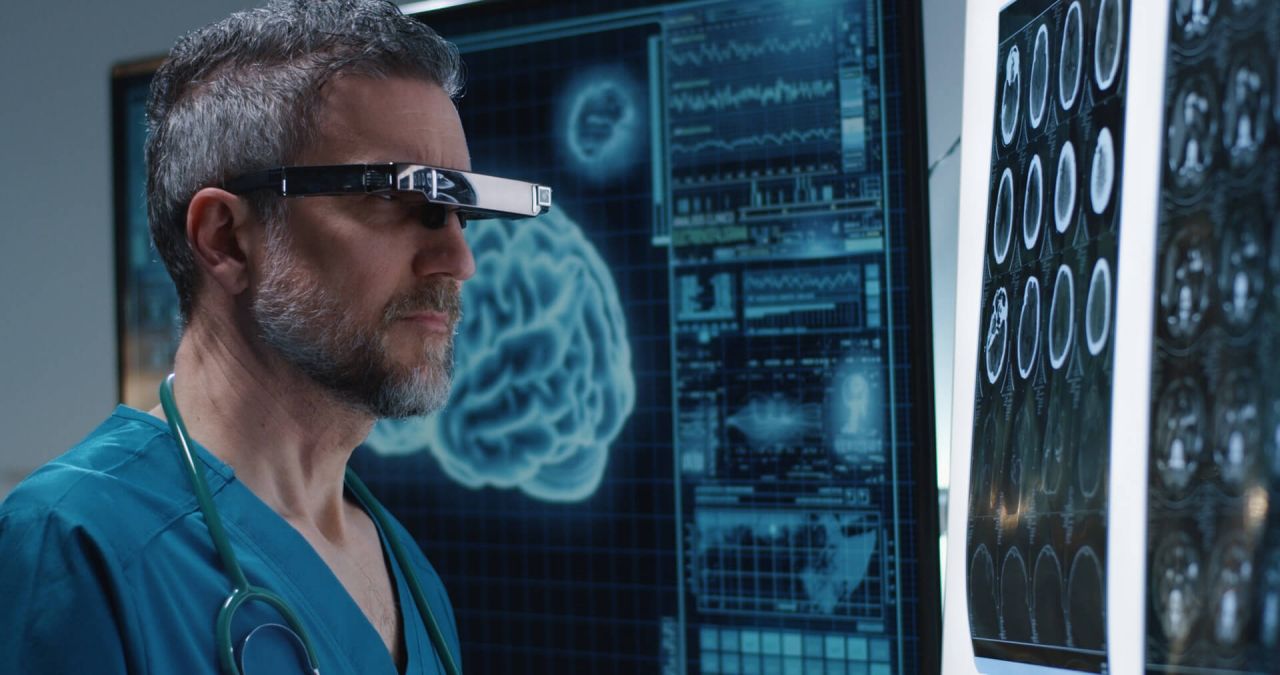
Now let’s talk in more detail about how exactly healthcare organizations can use AR technology in their work.
How Decision-Makers Can Implement Augmented Reality in a Healthcare Organization
Here are some use cases:
1. Using augmented reality in healthcare for interactive patient information, data visualization, and body mapping
For patients, it can often be difficult to explain to a specialist exactly what is bothering them, especially those with little medical education or knowledge.
This can make diagnosis more difficult. However, AR-based apps and devices can be helpful in educating patients.
Healthcare companies can implement similar technology to help patients describe their symptoms more clearly and simply the work of diagnosticians.
2. Using AR for advanced diagnostics and risk assessment
Diagnostics is one of the most important components of the treatment process. Physicians rely on symptoms and various types of data to determine the course of treatment.
AR technology can assist physicians in detecting and treating a variety of diseases.
Some AR devices allow doctors to separate images of the patient’s body into virtual layers to find potential causes of the condition.
This can increase the precision of diagnosis and avoid risk.
3. Using augmented reality in healthcare for training simulation and medical education
Using AR technology, medical staff can effectively examine the human body and its components and interact with virtual objects to study them in more detail.
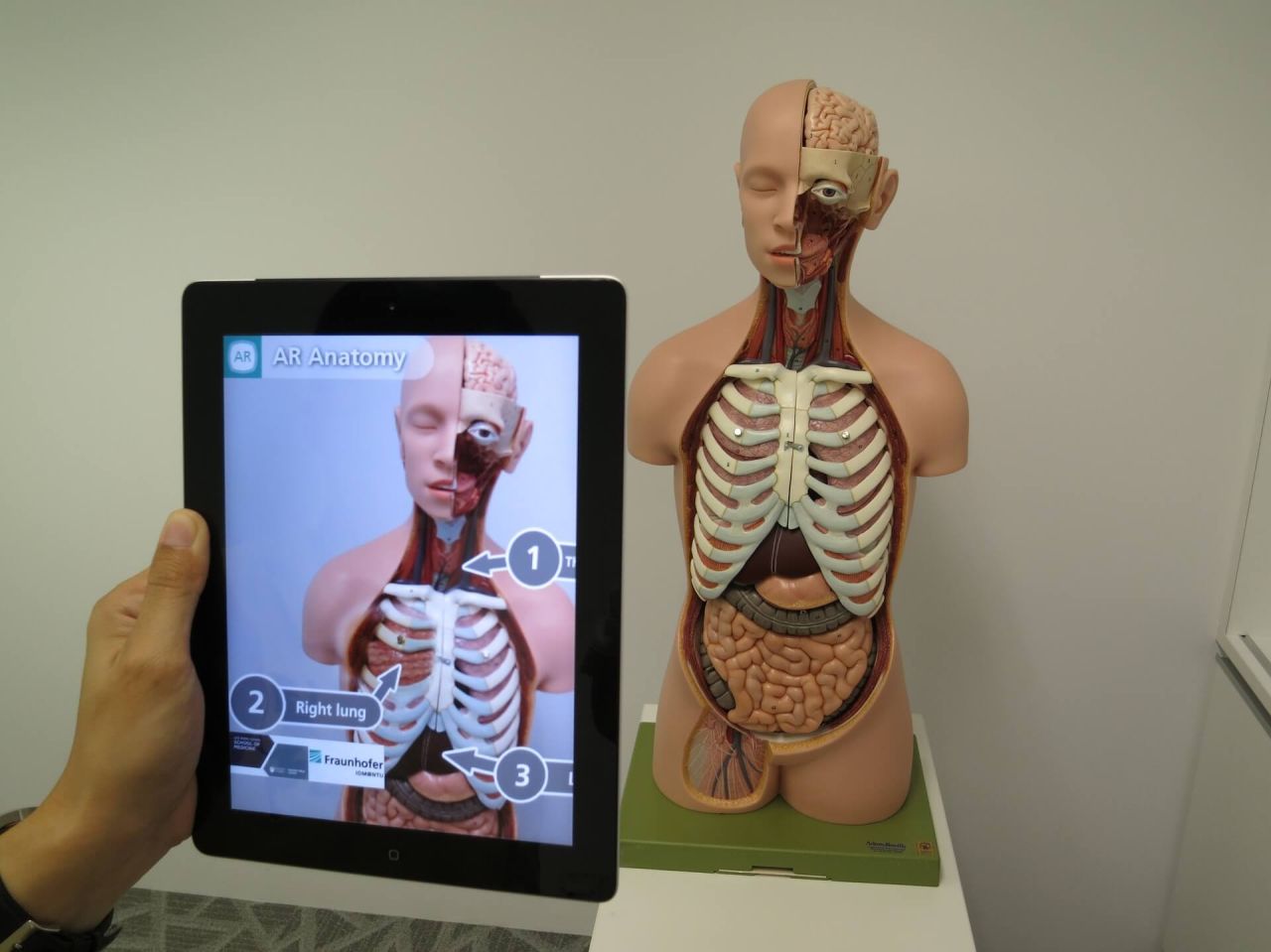
Such training can be especially useful for working out atypical scenarios, in order to prepare specialists for emergency situations. This type of training can also play a role in teaching team members to assist the surgeon during complex surgery.
Using AR, a team member is able to not only observe but also practice participating in the surgery process without real risk.
4. Using AR for surgery assistance
Augmented Reality devices and tools can be used during real surgery, which may even save the patient’s life. The surgeon can see three-dimensional projections of the patient’s organs to plan the next step.
For example, AR technology can greatly simplify spinal surgery and reduce the risk of complications.
A few years ago, Augmedics, an Israeli startup, developed an Augmented Reality device for spine surgeons.
With this device, a specialist can see a three-dimensional projection of the patient’s spine, similar to an X-ray shot.
Recently, this technology has received official FDA approval.
5. Using augmented reality in healthcare for doctor consultation
Communication between the doctor and patient is key to the success of many treatments, but it can be difficult to ensure constant and quality communication.
Fortunately, AR technology can help solve this problem.
6. Using AR to improve nursing care
Sometimes, medical staff have difficulty inserting a needle correctly on the first attempt, which is inconvenient and painful to patients, especially children.
Even here, AR technology offers practical applications.
For example, AccuVein, an Augmented Reality tool, uses a handheld scanner to project a picture of the underlying veins on the patient’s skin, making it easier to succeed with a single stick.
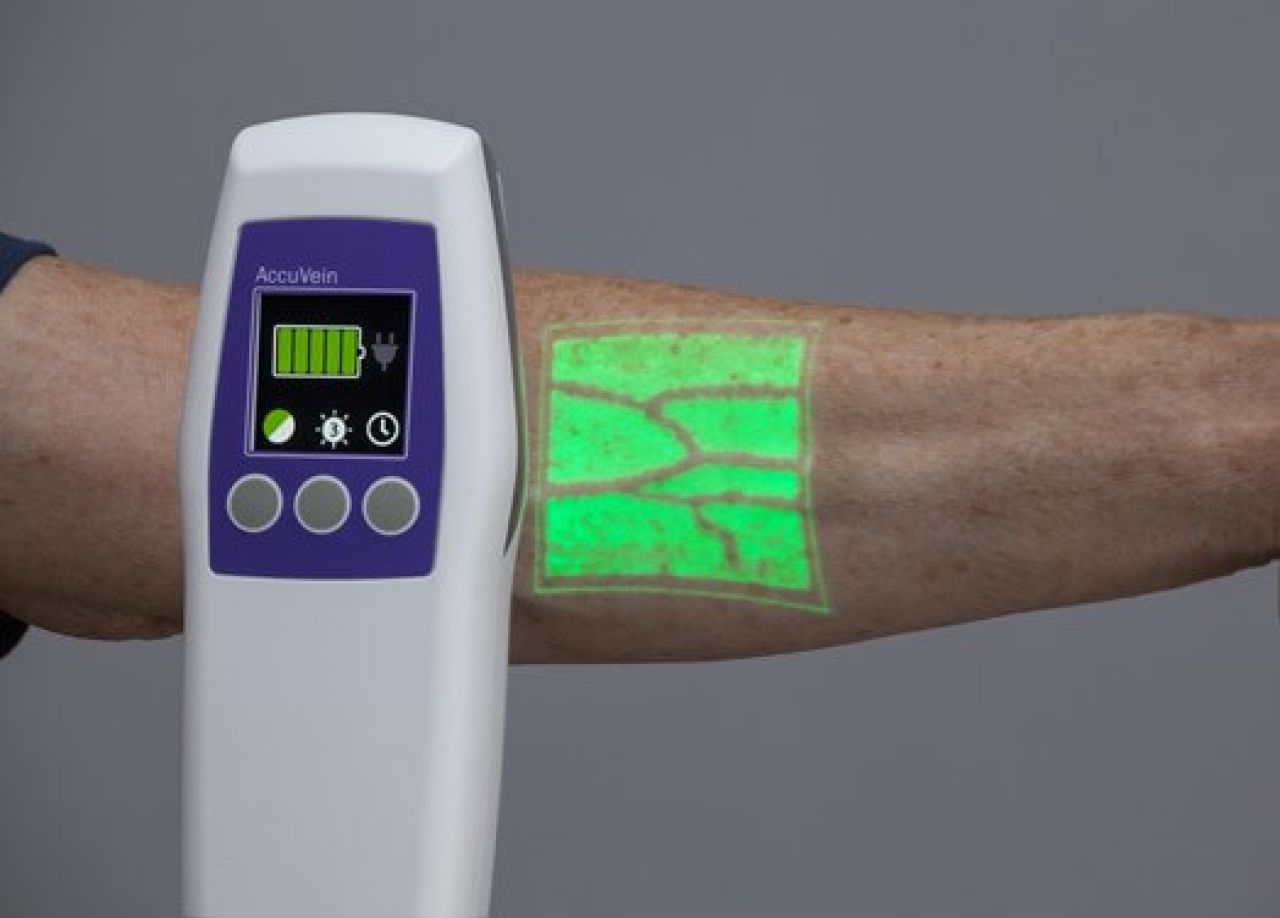
According to data from AccuVein, the tool increases the chance of successfully finding the vein on the first try by 3.5 times.
To develop the kind of solution discussed above and reap the benefits of AR, decision-makers will need to work with professional software developers.
Our engineers can study your healthcare organization’s needs in detail and help develop a solution most suitable for your team.
Wrapup
Today, more and more healthcare organizations are willing to invest in AR technology to reap the tangible benefits it can bring to hospitals and other medical settings.
Implementing AR-based tools and devices can help healthcare organizations make their staff more productive and ensure their patients are more satisfied.
Healthcare organizations can use AR for:
- Data visualization and body mapping, as well as interactive patient information
- Better risk assessment and diagnostics
- Advanced medical education and training simulation
- Surgery assistance
- Doctor/patient consultation
- Making nursing care more effective
As AR technologies have become a hype in the healthcare market, you may pick a niche that will take you the leading edge: from medical training applications to AR-assisted surgical tools, telehealth apps, and novel pain treatment solutions.
With rich expertise in the healthcare domain and AR and VR software engineering, VironIT uses a well-balanced set of technologies to create incredible solutions that will make you stand out from the crowd. If you want to know more about how you can use Augmented Reality or hire professional developers, feel free to contact us.





Jackson gilbert says:
Nice information! You have shared a great piece of information that how augmented reality can be used in the healthcare industry. I really appreciate your efforts. Thank you for sharing and creating awareness.
ปั้มไลค์ says:
Like!! I blog frequently and I really thank you for your content. The article has truly peaked my interest.